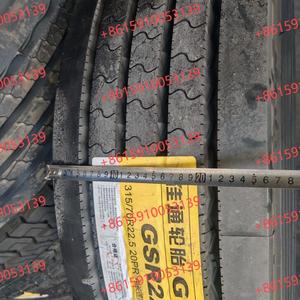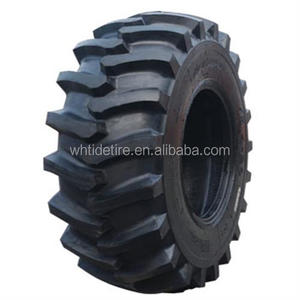Luhe tyre
(31 products available)






Luhe High Quality American Standard Tubeless BIAS TRUCK TIRES 9/22.5 10/22.5 11/22.5 Cheap Wholesale Tires






Maxxis Tires R15 Pneu 1757014 Car Rims Passenger Car Tires 195 50 15 Tires Aros De Carro 15 215 50 17 LUHE/JKC/FIRST






E3/L3 26.5-25 29.5-25 28PR 34PR Loader Earthmover Grader China Radial Bias OTR Tyres 29.5X25 26.5X25
Popular in your industry






Bias Light Truck Tyre 650/15 650/16 700/14 700/15 LUHE Brand Truck Tyres for Sale




14.00-20 16.00-20 China Sand Desert Ground and Loose Road Surface Tyres 1400-20 1600-20






Luhe Brightway Light Truck Tires 700*16LT 750*16LT 825*16LT TBB Tyres

good quality china 2020 year brand new 4.50r12ult tires for small truck low price

good quality luhe brightway brand 500r12 lrp198 light truck tyre low price






5.00-12 6.00-12 6.40/6.50-13 6.50-14 7.50-16 Light Truck Mix Pattern Z-lug
Top categories
About luhe tyre
Types of Luhe Tyre
There are different types of LUHE tyre options suitable for various applications. They include the following.
-
LUHE Truck and Bus Tyres
These tyres are designed for commercial trucks and buses. They offer high mileage, stability, and load-carrying capacity. LUHE TBR tyres are suitable for long-distance and regional transport.
-
LUHE Off-the-Road (OTR) Tyres
These tyres are designed for large mining and construction equipment. They are robust and durable to withstand harsh off-road conditions. LUHE OTR tyres are suitable for applications such as mining, quarrying, and heavy construction.
-
LUHE Agricultural Tyres
These tyres are designed for tractors and other farm equipment. They offer good traction and durability for agricultural operations. LUCHE agricultural tyres are suitable for fieldwork, planting, and harvesting operations.
-
LUHE Industrial tyres
These tyres are designed for material handling equipment such as forklifts. They are suitable for logistics and warehousing operations, providing good traction and durability on paved surfaces.
-
LUHE Light Truck Tyres
These tyres are designed for light trucks and commercial vans. They offer good handling, load capacity, and durability for urban and regional transportation.
-
LUHE Passenger Car tyres
These tyres are designed for passenger cars. They offer a comfortable ride, good handling, and performance for personal and family use.
Specification and Maintenance of Luhe Tyre
Specification is an important aspect of any product as it helps the buyer to understand what they are getting into. The Luhe tyre specification varies from one type of tyre to the other. However, here are some common specifications buyers can expect:
-
Tyre Size
Every Luhe tyre has a standard size that is specified. The size is indicated on the sidewall of the tyre. The size is given in millimetres and consists of three main parts separated by slashes. For instance, a tyre with a specification of 215/65 R16 means it has a width of 215 mm, a sidewall aspect ratio of 65%, and a diameter of 16 inches. Tyre size is important, especially when replacing a tyre, to ensure the new tyre fits the wheel.
-
Load Rating
Luhe tyre load rating is an important specification for heavy-duty truck tyres. The load rating is given in numbers and indicates the maximum weight the tyre can support. For example, a tyre with a load rating of 1200 can carry a load of 1200 kg. The load rating is important when selecting a tyre for a truck since it ensures the tyre can carry the load of the truck without damage.
-
Speed Rating
Speed rating is another specification that is important for Luhe truck tyres and Luhe ATV tyres. The speed rating is given in letters and indicates the maximum speed the tyre can handle. For instance, a tyre with a speed rating of Z can reach speeds of over 240 km/h. Speed rating is an important specification for high-speed vehicles to ensure the tyre performs well at high speed.
-
Tread Depth
Tread depth is a critical aspect of the Luhe tyre specification that affects traction and tyre wear. Tread depth is measured in mm from the top of the tread ribs to the bottom of the tread voids. The tread depth varies depending on the tyre model, but new Luhe tyres typically have a depth of 8-10 mm. Worn-out tyres have a depth of 2-3 mm.
-
Material
Generally, most Luhe tyres are made of rubber. Rubber is a durable material that has a longer lifespan. Rubber tyres are used in all types of vehicles. In addition to rubber, some Luhe tyres incorporate other materials to improve performance. For instance, some tyres have carbon black in the rubber to increase its strength and wear resistance.
Luhe tyre maintenance is key to increasing the lifespan of the tyre and improving its performance. Here are some common maintenance practices of Luhe tyre that can be done easily:
-
Tyre Rotation
Tyre rotation involves changing the position of the tyres on the vehicle. This is done after every 8000 km. The rotation helps to wear the tyre evenly and improve its lifespan. The rotation pattern depends on the type of vehicle and the type of tyre.
-
Wheel Alignment
Wheel alignment is another important maintenance practice for Luhe tyre. Wheel alignment ensures the angle of the tyre is perpendicular to the ground and parallel to each other. Proper wheel alignment is important for proper handling of the vehicle and to prevent uneven tyre wear. This is because improper wheel alignment causes the tyre to drag, which leads to damage.
-
Inflation Pressure
Inflation pressure is an important aspect of Luhe tyre maintenance. Proper inflation pressure is important for handling, comfort, and fuel efficiency of the vehicle. Overinflated tyres reduce the contact area of the tyre with the ground, which reduces traction and increases wear in the middle part of the tread. Overinflated tyres also improve the risk of skidding. On the other hand, underinflated tyres increase the contact area with the ground, which increases wear in the outer part of the tread and reduces traction. Improper inflation pressure reduces the lifespan of the tyre. Therefore, it is important to check the inflation pressure of the tyre once a month.
How to Choose Luhe Tyre
When choosing any Luhe tire, consider the following factors:
-
Understand the Vehicle Needs
Every vehicle is distinct, and determining the type of Luhe tyre needed is crucial. A 4x4 off-road tire for a 4x4 vehicle for traversing rugged terrain may not be appropriate. The kind of road the car travels on a regular basis, the weather conditions, and how often the car is used all play a role in selecting the tire that fits the vehicle.
-
Recognize the Size of the Tire
Every automobile has a specific tire size that is recommended. This specification can be found in the owner's manual or on a label located on the driver's door. Always select a tire whose size corresponds to that of the one that was originally installed on the car. Proper Luhe tire sizes guarantee safe driving and optimal vehicle performance.
-
Check the Tread Pattern
There are several tread designs available, each providing various grip levels on the road. The most common Luhe tyre tread patterns are asymmetrical and directional. Choose a tread pattern that meets the requirements and financial constraints.
-
Take into Account the Season
There are seasonal tires made to function well in various weather conditions. Winter tires provide better grip in snow and ice, while summer tires offer better performance in hot weather. All-season tires are made to provide average performance in all conditions. Choosing tires that are appropriate for the season can improve safety and performance.
-
Identify Driving Needs
Consider the driving habits and needs. Performance tires suit high-speed and sporty driving, while touring tires provide a comfortable ride for long-distance travel. If off-road conditions are a routine, all-terrain tires are a must.
-
Quality and Reputation
Quality and reputation are very important when choosing tires. Look for reputable brands and high-quality tires. Quality tires provide better performance, safety, and durability.
-
Cost and Budget
When choosing a Luhe tire, cost and budget are very important considerations. Tires for different cars are available at various prices. Establish a budget before buying new tires, and look for tires that fit the budget. Never skimp on tire quality because it affects performance and safety.
How to DIY and Replace Luhe Tyre
When replacing a LUHE tire, whether it's a motorcycle tire or a bike tire, the process is quite easy. Here are a few steps to take when replacing the tire:
- 1. Prepare the necessary tools: Gather tire levers, a new tire and inner tube (if needed), a pump or CO2 inflator, and sealant (for tubeless tires).
- 2. Remove the wheel: For most bikes, you'll need to loosen the quick-release lever or use a 15mm wrench to remove the thru-ax.
- 3. Deflate the tire completely: Release the valve cap and press down on the valve core using a valve tool or puncture the valve core with a sharp tool. This step ensures all air is released from the tire.
- 4. Separate the tire from the wheel rim: Use tire levers to pry one side of the tire over the wheel rim, starting opposite the valve and working around the circumference. If the tire is particularly tight, a bead breaker tool can be used to separate the tire from the rim.
- 5. Remove the inner tube: Pull the inner tube out of the tire. If the tire is tubeless, disconnect the tire from the rim, and remove the sealant.
- 6. Install the new inner tube: LUHE tire sizes are usually standard. Ensure the new inner tube is LUHE tire size. LUHE tire tubes are a bit expensive. Place the new inner tube into the tire and ensure the valve stem is aligned with the hole in the wheel rim.
- 7. Install the new tire: Carefully fit the tire onto the wheel rim, ensuring it is seated correctly. Be cautious not to pinch the inner tube between the tire and rim during this process.
- 8. Inflate the tire: Use a pump or CO2 inflator to inflate the tire gradually, checking for proper bead seating and any leaks. If using a tubeless tire, add the recommended amount of sealant and shake the wheel to distribute the sealant.
Q and A
Q1: What is the Luhe tyre size chart?
A1: The size chart shows the different sizes of Luhe tyres available. The size of a tyre is represented by a series of numbers that indicate its dimensions. For instance, in the 245/70R17 example, 245 indicates the tyre width in millimetres, 70 is the aspect ratio that indicates the height of the sidewall in millimetres, and 17 is the diameter of the wheel in inches. By reading the size chart, buyers can select the right tyre size for their vehicle.
Q2: How can I buy Luhe tyres?
A2: This can be done by contacting Luhe tyre manufacturers or suppliers through the Luhe tyre Cooig.com page. Customers can also purchase Luhe tyres through local distributors or tyre shops. To get the correct tyre, specify the desired size and type and check the availability of the desired tyre model.
Q3: What is the Luhe tyre warranty?
A3: Luhe tyres have different warranty policies depending on the manufacturer. Typically, the warranty covers defects in materials and workmanship. It also provides a replacement or credit for the value of the remaining tread if a tyre wears out before the expected time. The warranty has conditions and exclusions, such as the requirement for proper tyre maintenance and use according to the specified conditions.
Q4: Where are Luhe tyres manufactured?
A4: Luhe tyres are designed and manufactured in China. However, they are also manufactured in other countries with advanced manufacturing technologies.




































































































